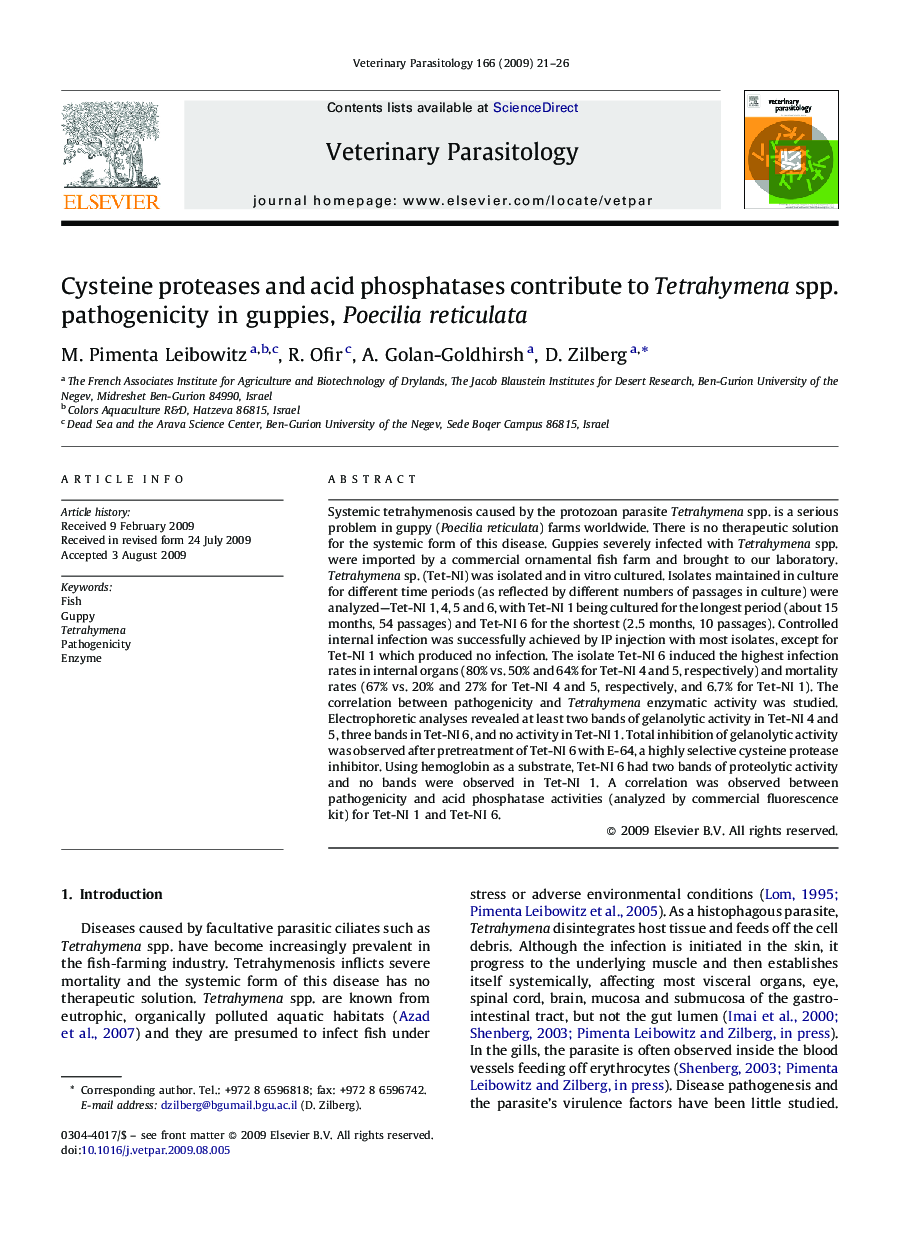| Article ID | Journal | Published Year | Pages | File Type |
|---|---|---|---|---|
| 2471017 | Veterinary Parasitology | 2009 | 6 Pages |
Systemic tetrahymenosis caused by the protozoan parasite Tetrahymena spp. is a serious problem in guppy (Poecilia reticulata) farms worldwide. There is no therapeutic solution for the systemic form of this disease. Guppies severely infected with Tetrahymena spp. were imported by a commercial ornamental fish farm and brought to our laboratory. Tetrahymena sp. (Tet-NI) was isolated and in vitro cultured. Isolates maintained in culture for different time periods (as reflected by different numbers of passages in culture) were analyzed—Tet-NI 1, 4, 5 and 6, with Tet-NI 1 being cultured for the longest period (about 15 months, 54 passages) and Tet-NI 6 for the shortest (2.5 months, 10 passages). Controlled internal infection was successfully achieved by IP injection with most isolates, except for Tet-NI 1 which produced no infection. The isolate Tet-NI 6 induced the highest infection rates in internal organs (80% vs. 50% and 64% for Tet-NI 4 and 5, respectively) and mortality rates (67% vs. 20% and 27% for Tet-NI 4 and 5, respectively, and 6.7% for Tet-NI 1). The correlation between pathogenicity and Tetrahymena enzymatic activity was studied. Electrophoretic analyses revealed at least two bands of gelanolytic activity in Tet-NI 4 and 5, three bands in Tet-NI 6, and no activity in Tet-NI 1. Total inhibition of gelanolytic activity was observed after pretreatment of Tet-NI 6 with E-64, a highly selective cysteine protease inhibitor. Using hemoglobin as a substrate, Tet-NI 6 had two bands of proteolytic activity and no bands were observed in Tet-NI 1. A correlation was observed between pathogenicity and acid phosphatase activities (analyzed by commercial fluorescence kit) for Tet-NI 1 and Tet-NI 6.
